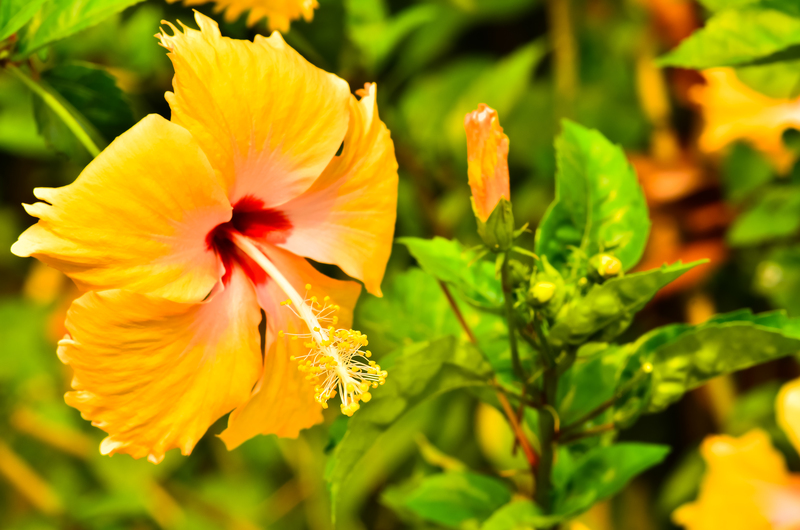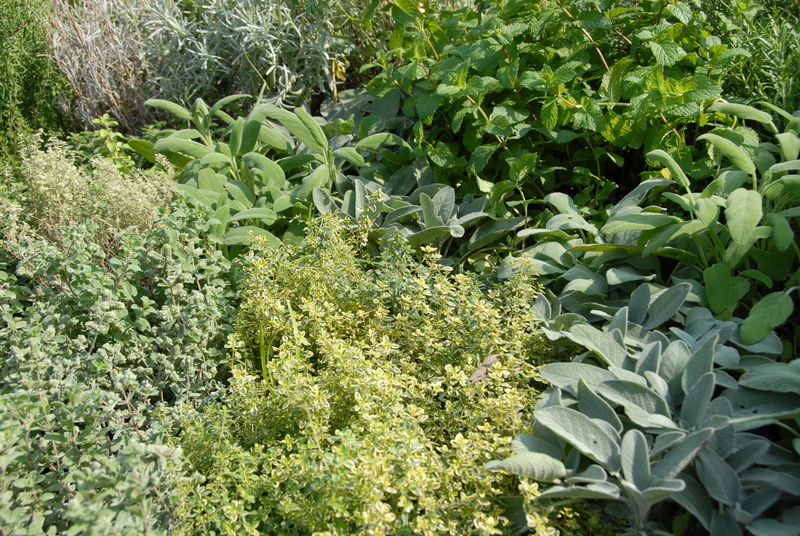The essential guide to container gardening
Posted on 20/08/2025
The Essential Guide to Container Gardening
Container gardening has transformed how people around the world connect with nature, regardless of their available space. Whether you have a sprawling backyard, a tiny urban balcony, or even just a sunny windowsill, growing plants in containers opens up a world of possibilities. This comprehensive guide will walk you through everything you need to know about starting and maintaining your own successful container garden.
What Is Container Gardening?
- Space Efficiency: Ideal for small living environments and urban areas.
- Mobility: Easily move plants for better sunlight or weather protection.
- Control: Manage soil, nutrients, and moisture more precisely.
- Diversity: Grow flowers, herbs, vegetables, and fruit, often side by side.
By understanding the fundamentals of growing in containers, you can turn any space into a vibrant oasis.

Benefits of Container Gardening
The appeal of container gardening lies in its versatility and accessibility. Here's why so many gardeners--novice and expert alike--embrace this style of cultivation:
- Accessibility: Raised containers reduce bending and make gardening easier for people with mobility challenges.
- Flexibility: Rearrange, update, or experiment with different plants and aesthetic designs without digging up a yard.
- Pest and Disease Control: Minimize problems by isolating plants from soil-borne illnesses and pests.
- Season Extension: Move containers to sunny spots or indoors to prolong growing seasons.
With minimal investment, potted gardening can yield a thriving display of flowers, culinary herbs, or even a tomato crop.
Choosing the Right Containers
Container Material Options
Plant pots and containers come in a vast array of materials, each with specific advantages and disadvantages.
- Terracotta: Porous, classic look, but can dry out quickly.
- Plastic: Lightweight, affordable, retains moisture well, but may weather over time.
- Ceramic/Glazed: Attractive and water-retentive, but heavier and often more expensive.
- Metal: Modern aesthetic, durable, but can overheat roots in direct sun.
- Wood: Natural appearance, good insulation, but may degrade if not treated.
Size and Drainage
Container size matters; too small and plants can become root-bound, too large and excess soil may retain unwanted moisture. Generally, bigger is better for root development and moisture regulation. Drainage is essential: always ensure your pots have holes at the base.
The Best Soil for Container Gardening
Choosing the right potting mix is key for healthy, thriving plants. Standard garden soil is often too heavy and poorly draining for container use.
- Commercial Potting Mix: Specifically formulated for drainage and fertility.
- Soilless Mixes: Lightweight blends for sensitive species or seed starting.
- Custom Mixes: Combine compost, peat moss, perlite, and vermiculite for an ideal balance of moisture and aeration.
*For best results, refresh container soil every growing season to prevent disease buildup and to supply fresh nutrients.
What Can You Grow in Containers?
From container vegetable gardening to growing ornamental plants, there are very few limits to what you can cultivate.
Popular Edible Plants
- Tomatoes, peppers, and salad greens
- Herbs like basil, mint, thyme, and parsley
- Root crops including radishes and carrots (choose deep containers)
- Strawberries and compact fruit bushes
Ornamental Plants for Pots
- Bedding plants: petunias, begonias, impatiens
- Bulbs: tulips, daffodils, lilies
- Succulents and cacti
- Small shrubs and dwarf evergreens
How to Plan Your Container Garden
Find the Right Location
Light is the most critical requirement. Observe your available space for sunlight--at least 6-8 hours per day is ideal for most fruiting vegetables and flowers.
Combine Plants Wisely
When mixing plants in one pot, group together varieties with similar requirements for light, water, and nutrients. Thriller, Filler, Spiller is a common approach:
- Thriller: Upright, attention-grabbing plants (ex: ornamental grasses, tall flowers)
- Filler: Mid-height plants that fill space (ex: begonias, leafy annuals)
- Spiller: Cascading plants that drape over the edge (ex: ivy, petunias, sweet potato vine)
Planting Your Container Garden Step-by-Step
- Prepare Your Containers: Clean thoroughly and check drainage holes.
- Layer the Bottom: Add small stones or broken pot pieces for improved drainage (optional).
- Fill with Potting Mix: Leave daylight at the top for watering and plant placement.
- Arrange Your Plants: Place tallest plants at the center or back, and trailing varieties near the edges.
- Water Thoroughly: After planting, water until excess drains out the bottom.
- Mulch and Feed: Top-dress with fine mulch to retain moisture and add a slow-release fertilizer.
Watering and Maintenance
- Water Needs: Container gardens dry out faster than ground beds. Water frequently--often daily in hot weather.
- Check Moisture: Stick a finger an inch below the surface; water when dry.
- Fertilize Regularly: Nutrients leach out with each watering; use liquid feed or slow-release pellets every few weeks.
- Rotate Pots: Prevent plants leaning toward the light by rotating containers weekly.
- Deadhead and Prune: Remove faded flowers and trim leggy growth to encourage blooming and bushiness.
Common Challenges in Container Gardening
Pest and Disease Management
*Containers isolate plants from many ground pests, but be vigilant: watch for aphids, spider mites, slugs, and fungal diseases. Use soap sprays, neem oil, or simply remove pests by hand.
Overwatering and Root Rot
Always ensure containers have adequate drainage. Use a moisture meter if in doubt--roots sitting in soggy soil will lead to rot and plant failure.
Soil Depletion
Container plants exhaust nutrients quicker, especially heavy feeders like tomatoes. Feed consistently and replace soil every season.
Seasonal Tips for Container Gardening
Spring
- Start seeds indoors; move containers outside after frost risk.
- Plant cool-season annuals and veggies.
Summer
- Increase watering frequency.
- Monitor for rapid plant growth and repot as needed.
Autumn
- Plant fall flowers and leafy crops.
- Prepare to move tender plants indoors.
Winter
- Wrap outdoor containers with insulating material or bubble wrap.
- Move containers to sheltered areas; water sparingly.
The Eco-Friendly Side of Container Gardening
Container gardening can be highly sustainable. Reuse and upcycle containers (think old buckets, barrels, or even tires) for creative, environmentally-conscious planters. Use organic potting mix, compost kitchen scraps, and employ water-saving methods such as drip trays and self-watering pots.
Design Tips: Creating Stunning Container Displays
- Colors: Play with contrasting foliage and flower colors for visual impact.
- Levels: Vary container heights with stands or shelves to add dimension.
- Groupings: Cluster pots in odd numbers for a cohesive look.
- Seasonal Interest: Change plantings throughout the year to maintain attractiveness.
Don't be afraid to experiment--container gardening is a creative outlet as much as a practical one.
Best Containers for Different Plants
| Plant Type | Container Recommendation |
|---|---|
| Herbs | Shallow pots (6-8 inches deep) |
| Tomatoes/Peppers | Large pots (12-18+ inches deep and wide) |
| Root Vegetables | Deep containers (at least 12 inches) |
| Annual Flowers | Medium pots or window boxes |
| Small Shrubs | Heavy-duty tubs or half-barrels |

Frequently Asked Questions About Container Gardening
How do I make my own potting soil?
Mix two parts peat moss or coconut coir, one part perlite or vermiculite, and one part compost for a balanced, homemade blend.
Can I reuse potting soil?
Yes, but it's best to remove old roots, mix in fresh compost, and sterilize if diseases are present.
How often should I water container plants?
Typically, daily in hot weather and every couple of days otherwise. Monitor moisture to avoid under- or overwatering.
What are the best vegetables for beginners?
Salad greens, radishes, bush beans, and cherry tomatoes are ideal starter crops for the container gardening beginner.
Conclusion
Whether you're looking to spice up your living space, grow your own food, or simply indulge your passion for plants, container gardening offers endless possibilities. With the right soil, containers, and a bit of creativity, anyone can cultivate a lush, productive garden--no yard required.
Start small, experiment, and enjoy the rewards of growing plants in pots. Happy gardening!

